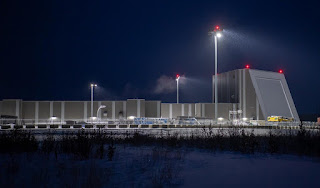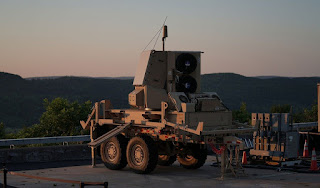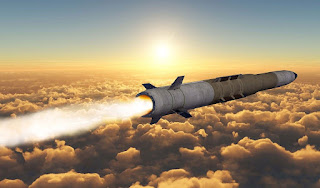The Golden Dome: Space Warfare and the Future of Global Power. Human Ingenuity Part 3.
In an era where threats no longer just come from land, sea, or air—but from beyond our atmosphere—the United States has unveiled one of the most ambitious defense initiatives in modern history: the Golden Dome.
Announced in 2025, this project aims to build a next-generation missile defense shield that not only blankets American skies but extends deep into space. With satellites, interceptors, and futuristic laser systems integrated into a single strategic network, the Golden Dome signals a dramatic shift in how nations will defend themselves in the 21st century.
But what exactly is the Golden Dome?
Is it achievable—or merely aspirational?
And what does it mean for the future of global security?
Let’s explore the origins, technology, politics, and implications of this bold new chapter in America’s defense doctrine.
Overview of the Golden Dome Missile Defense System
Key Points:
- The "Golden Dome" is a proposed U.S. missile defense system, likely costing around $175 billion, aimed at protecting the nation from ballistic and cruise missile threats.
- It involves a network of space-based sensors and interceptors, inspired by Israel’s Iron Dome but on a much larger scale.
- The system is designed to detect and destroy missiles, particularly during their boost phase, using advanced technologies like infrared sensors and possibly lasers.
- It will likely be deployed through a constellation of satellites in low Earth orbit and ground-based facilities, though specific locations remain unclear.
- The project faces controversy due to its high cost, technical challenges, and potential to escalate global tensions, with estimates ranging from $161 billion to trillions.
- Economic impacts could include job creation and technological innovation, but the cost may strain the U.S. budget amid concerns about national debt.
What is the Golden Dome?
The Golden Dome is a proposed missile defense system announced by President Donald Trump on May 20, 2025, intended to shield the United States from missile attacks by nations like China, Russia, Iran, and North Korea. Unlike Israel’s Iron Dome, which protects against short-range rockets, the Golden Dome aims to counter advanced threats like intercontinental ballistic missiles (ICBMs) and hypersonic missiles across a vast area.
How Will It Work?
The system will use a network of satellites and ground-based sensors to detect missile launches, track their paths, and deploy interceptors to destroy them, ideally during the boost phase when missiles are most vulnerable. This multi-layered approach integrates land, sea, and space-based technologies to ensure comprehensive protection.
Why is it Needed?
The project responds to growing missile threats from adversaries developing sophisticated weapons, including hypersonic missiles and fractional orbital bombardment systems. These threats exploit gaps in current U.S. defenses, making a robust, space-based system a priority for national security.
Economic and Strategic Considerations
While the project could drive innovation and job growth, its high cost raises concerns given the U.S.’s significant national debt. Critics also warn of potential geopolitical fallout, including an arms race or increased militarization of space. The feasibility and funding of the project remain under debate, with Congress yet to approve the budget.
Comprehensive Report on the Golden Dome Missile Defense System
The Golden Dome missile defense system, announced by President Donald Trump on May 20, 2025, represents an ambitious effort to safeguard the United States from advanced missile threats. This report provides an in-depth analysis of the project’s development, technology, functionality, deployment, protective capabilities, rationale, cost, viability, and economic impacts, addressing the complexities and controversies surrounding this $175 billion initiative.
Development Plan
The United States plans to develop the Golden Dome as a multi-layered missile defense system, integrating ground, sea, and space-based components. The project, led by U.S. Space Force General Michael Guetlein, will leverage a constellation of hundreds or potentially thousands of small satellites in low Earth orbit (LEO). These satellites will be equipped with advanced sensors and interceptors to detect and neutralize missile threats. The system builds on existing U.S. missile defense capabilities, such as the Ground-based Midcourse Defense (GMD) system, but extends protection into space to address modern threats like hypersonic missiles and ICBMs. The Pentagon has engaged defense contractors to design and build this network, with an initial $25 billion allocated in the 2025 defense budget to begin construction.
The development process draws inspiration from Israel’s Iron Dome, which intercepts short-range rockets, but the Golden Dome is far more expansive, aiming to protect a nation 450 times larger than Israel. The project echoes elements of the Reagan-era Strategic Defense Initiative (SDI), or “Star Wars,” but benefits from advancements in satellite technology, reusable launch vehicles, and miniaturized sensors, making it more feasible today.
Technology Utilized
The Golden Dome will employ cutting-edge technologies to achieve its objectives:
- Sensors: Advanced infrared and radar systems, likely built by companies like Lockheed Martin and L3Harris, will detect missile launches by identifying heat signatures and tracking trajectories. These sensors will be deployed on satellites in LEO, as well as on ground-based and sea-based platforms.
- Interceptors: The system will use kinetic kill vehicles or possibly directed energy weapons, such as lasers, to destroy missiles. Space-based interceptors are designed to target missiles during their boost phase, a brief 3–5 minute window post-launch when missiles are slower and more predictable.
- Command and Control Systems: Sophisticated software, potentially incorporating artificial intelligence and machine learning, will process sensor data and coordinate interception efforts in real time. These systems will integrate with existing U.S. defense networks for seamless operation.
- Satellite Constellation: The system will rely on a network of satellites, comparable in scale to SpaceX’s Starlink (approximately 7,000 satellites), to ensure global coverage. This constellation will be supported by reusable launch vehicles to reduce costs.
- Hypersonic Defense: The system aims to counter hypersonic missiles, which are difficult to track due to their speed and maneuverability, requiring advanced satellite-based tracking systems.
The groundwork for these technologies was laid by the Space Development Agency (SDA), established in 2017, which has advanced reusable launch vehicles and satellite technologies.
Functionality
The Golden Dome operates as a “system of systems” with multiple defensive layers:
- Detection: Sensors on satellites, ground stations, and naval platforms detect missile launches by identifying heat signatures or radar signals.
- Tracking: The system calculates the missile’s trajectory, distinguishing it from decoys or other objects.
- Interception: Interceptors, launched from space or terrestrial sites, destroy the missile, ideally during the boost phase when it is most vulnerable. If missed, additional layers of defense, such as ground-based interceptors in California and Alaska, can engage the missile later in its flight.
The system is designed to counter a range of threats, including ICBMs, cruise missiles, hypersonic missiles, and fractional orbital bombardment systems (FOBS), which can deliver warheads from space.
Deployment and Placement
The Golden Dome will be deployed across multiple domains:
- Space-Based Components: A constellation of satellites in LEO will provide global coverage for missile detection and interception. These satellites will be distributed to ensure constant monitoring of potential launch sites worldwide.
- Ground-Based Components: Radar stations, interceptor launch sites, and command centers will be strategically located across the United States, potentially at existing missile defense sites like Fort Greely, Alaska, and Vandenberg Space Force Base, California. Additional sites may be established in allied countries, such as Canada, which has expressed interest in participating.
- Sea-Based Components: Naval platforms, such as Aegis-equipped destroyers, may contribute to the system’s sensor and interceptor capabilities, enhancing flexibility.
Specific locations for new facilities have not been publicly detailed, but the system’s global scope suggests a distributed network to maximize coverage.
Protective Capabilities
The Golden Dome aims to protect the United States by intercepting and destroying incoming missiles before they reach their targets. By targeting missiles during their boost phase, the system avoids challenges posed by decoys and countermeasures used in later flight stages. It is designed to counter:
- ICBMs: Long-range missiles capable of carrying nuclear warheads.
- Hypersonic Missiles: Fast, maneuverable weapons that evade traditional defenses.
- Cruise Missiles: Low-flying missiles that pose a threat to critical infrastructure.
- FOBS: Space-based systems that can deliver warheads unpredictably.
The system’s integration with existing defenses, such as GMD and Aegis, ensures a layered approach, enhancing overall effectiveness. Canada’s potential involvement suggests a broader North American defense network.
Rationale and Necessity
The Golden Dome was proposed in response to escalating missile threats from adversarial nations. The Defense Intelligence Agency has noted that countries like China and Russia are developing systems to exploit gaps in U.S. defenses, including hypersonic weapons and FOBS.
In today’s context, the need is driven by:
- Technological Advancements by Adversaries: Hypersonic missiles and FOBS require advanced defenses beyond current capabilities.
- Geopolitical Tensions: Rising tensions with China and Russia necessitate robust deterrence.
- Space as a Warfighting Domain: The increasing militarization of space underscores the need for space-based defenses.
Cost of Development and Research
The cost estimates for the Golden Dome vary widely:
- President Trump’s Estimate: $175 billion over three years, with an initial $25 billion allocated in the 2025 defense budget.
- Congressional Budget Office (CBO): $161–$542 billion over two decades.
- Sen. Tim Sheehy: Potentially in the trillions if fully completed.
These costs cover research, development, satellite production, launches, and integration with existing systems. The high variability reflects uncertainties in technological development and the scale of the satellite constellation.
Viability Amid U.S. Debt and Credit Rating Concerns
The U.S. national debt, projected to exceed $33 trillion in 2025 based on historical trends, poses a challenge to funding such an expensive project. Recent concerns about the U.S. credit rating, which has faced downgrades due to fiscal deficits, add complexity to the project’s viability. However, defense spending is often prioritized, as seen with past programs like the F-35, which has cost over $400 billion despite fiscal constraints. The Golden Dome’s funding will require congressional approval, and its prioritization depends on the perceived urgency of missile threats versus other national needs, such as healthcare or infrastructure.
Critics, like Laura Grego of the Union of Concerned Scientists, argue that the system’s complexity and cost, combined with vulnerabilities to counterattacks (e.g., clustered launches or satellite attacks), make it a risky investment. Proponents, however, cite technological advancements and the strategic necessity of countering modern threats, suggesting that the project could be feasible with disciplined funding and oversight.
Economic Impacts
The development and creation of the Golden Dome could have significant economic effects:
- Positive Impacts:
- Job Creation: The project will generate jobs in aerospace, defense, and technology sectors, including roles for engineers, scientists, and manufacturing workers. Companies like Lockheed Martin and L3Harris are likely to benefit.
- Technological Innovation: Advances in satellite technology, sensors, and interceptors could lead to breakthroughs with civilian applications, such as improved telecommunications or space exploration.
- Economic Stimulus: Defense contracts will stimulate local economies near manufacturing and launch facilities.
- Negative Impacts:
- Increased Debt: The project’s high cost could exacerbate the national debt, potentially leading to higher interest rates or inflation.
- Opportunity Costs: Funds allocated to the Golden Dome may reduce investments in other sectors, such as education or infrastructure, which could have broader economic benefits.
- Geopolitical Risks: Criticism from China and others about militarizing space could lead to trade or diplomatic tensions, indirectly affecting the economy.
The net economic impact will depend on how the project is funded, the efficiency of its implementation, and the extent to which technological advancements translate into broader economic gains.
Controversies and Challenges
The Golden Dome faces several challenges:
- Technical Feasibility: Experts like Laura Grego highlight the difficulty of intercepting missiles during the brief boost phase, requiring precise satellite positioning and rapid response times. The system’s reliance on a large satellite constellation makes it vulnerable to counterattacks, such as anti-satellite weapons.
- Cost Overruns: Historical missile defense programs, like SDI, have faced significant cost overruns and cancellations, raising concerns about the Golden Dome’s financial sustainability.
- Geopolitical Implications: China has criticized the project as a step toward militarizing space, potentially triggering an arms race. This could destabilize international relations and increase global tensions.
- Congressional Oversight: The project requires congressional funding, and skepticism about its cost and effectiveness may lead to delays or modifications.
Strategic Context
The Golden Dome builds on decades of U.S. missile defense efforts, from the SDI in the 1980s to the establishment of the Space Development Agency in 2017. Advances in reusable launch vehicles, pioneered by companies like SpaceX, have reduced the cost of deploying large satellite constellations, making the project more feasible than past attempts. However, critics argue that space-based defenses are less efficient than regional systems like Iron Dome and could provoke adversaries, undermining nuclear deterrence.
Conclusion
The Golden Dome missile defense system represents a bold vision to protect the United States from evolving missile threats using advanced space-based technologies. While it promises enhanced security, its high cost, technical challenges, and potential geopolitical consequences make it a contentious project. The economic benefits of job creation and innovation must be weighed against the fiscal burden and opportunity costs. Congressional oversight and international reactions will play critical roles in determining the project’s future.
Key Citations:
- Trump unveils ambitious plans for 'Golden Dome' missile defense
- Trump unveils plans for $175B 'Golden Dome' missile defense shield
- Trump announces $25 billion for "Golden Dome" missile defense system
- Trump selects $175 billion Golden Dome defense shield design
- Trump unveils plans for 'Golden Dome' missile defense system
- Trump lays out Golden Dome missile defense plan
- Trump selects concept for $175 billion 'Golden Dome' system
- Golden Dome to cost $175 billion, led by Space Force
- What is the Golden Dome missile defense shield?
- What is the "Golden Dome for America"?
- Golden Dome (missile defense system)
- Trump's Golden Dome Missile Shield: Implications
- Trump unveils plans for 'Golden Dome' missile defence system
- Trump wants a Golden Dome over America
- Space-based Missile Defense
- Space-based Missile Defense: Advancing Creativity
- Space-Based Missile Defense: How Much is Enough?
- Current U.S. Missile Defense Programs at a Glance
- Why a missile shield in space makes sense
- Space-based Missile Warning & Defense
- Space-Based Missile Defense Archives
- How space-based missile defenses could make us less safe
- Time for a New Missile Defense Review
- Strategic Defense Initiative







_conducts_a_mission.jpg)


Comments
Post a Comment